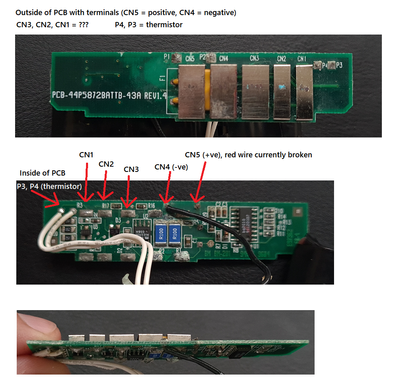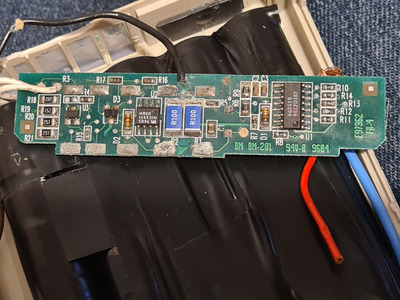First post, by djsubtronic
Hi guys
So as part of my Compaq LTE 5000 revival project I thought I'd try rebuild the battery as well to make it a fully portable old school machine.
The actual rebuild is not hard - it's simply 10 x 1.2V 17670 NiMH cells in series which can be obtained easily online. The issue lies a bit deeper, and I think has to do with the fact that the little circuit board within the battery is toast due to the corrosion from the original cells.
The battery has 5 terminals that connect into the laptop, two of which are the actual positive and negative from the battery. These pass through just fine to the outside of the battery terminal. My first experiment was just using 10 AA batteries, and when I plugged it into the laptop it made that distinct sound that it does whenever any power source was plugged in. So that was a positive sign. However, besides that there were no signs of life when I tried to power it on, no LED no nothing. So I figured the AA batteries probably just don't have enough power to actually turn it on.
I tried something else - I plugged a direct DC 12V power supply into where the cells would normally connect onto the battery circuit board (around 3.42A) so the limitations of AA batteries would be eliminated. This didn't work either, in spite of hearing the distinct "power source connected" sound again. I tried also to omit the battery circuitry entirely and connect a 12V, and even 14V power supply directly to the +/- battery terminals inside the laptop. Same distinct power connected sound again, but no sign of life still. And that was even with 14V/3.42A.
So my next thought is that, there are five terminals - surely they have something to do with it? Maybe the circuitry on that little board in the battery provides a signal to the mobo to allow it to turn on? I don't really know as I've never actually done anything like this before and couldn't find much online about the LTE 5000 battery schematics.
So that's why I'm posting here, if anyone has any knowledge about these old batteries? What are all the pins for? Am I doomed without a working battery circuit board? Etc?
Thanks!

